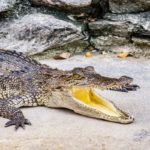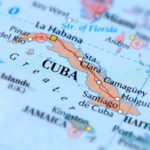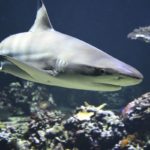The National Zoo of Cuba, in Havana, is one of the top tourist attractions in the city. The zoo is home to a wide variety of animals, including many endangered species, and offers a unique opportunity to learn about Cuban wildlife and conservation efforts.
With that in mind, let’s explore the history of the National Zoo of Cuba, the top attractions, and provide tips for visiting.
Introduction to the National Zoo of Cuba
The National Zoo of Cuba is a large zoo located in Havana, the capital city of Cuba. It is home to a wide variety of animals from around the world, including many native Cuban species, such as the Cuban crocodile and the Cuban boa.
The zoo is dedicated to the conservation and protection of these animals, as well as to providing education about wildlife and conservation efforts to visitors. It’s a popular tourist attraction and an important center for research and education in the field of zoology.
The history of the National Zoo
The National Zoo of Cuba was founded in 1937 by a group of Cuban scientists and naturalists. The zoo was originally located in the Vedado neighborhood of Havana, but it was moved to its current location in the eastern suburbs of the city in 1958.
The zoo has undergone many changes and expansions over the years, including the construction of new exhibits and the addition of many new species.
Today, the National Zoo of Cuba is one of the biggest and most vital zoos in Latin America, with a focus on research, conservation, and education. It is also an important center for the breeding and reintroduction of endangered species into their natural habitats.
What animals can you see?
The National Zoo of Cuba is home to a wide variety of animals, including many native Cuban species as well as exotic animals from around the world.
Some of the most popular animals to see at the zoo include:
- Cuban crocodile
- Cuban boa
- Cuban solenodon
- Cuban hutia
- Spix’s macaw
- Bengal tiger
- African lion
- Giraffe
- Chimpanzee
- Asian elephant
- And many more.
The zoo has a number of different exhibits, including a reptile house, an aviary, and a primate island. Visitors can also see various animals in their natural habitats, such as the butterfly garden and the African savannah exhibit.
What are the top attractions here?
Some of the main attractions at the National Zoo of Cuba include:
The Cuban Crocodile Exhibit
This exhibit showcases one of Cuba’s most endangered species, the Cuban crocodile. Visitors can see these fascinating reptiles up close and learn about conservation efforts to protect them.
The Primate Island
This exhibit features a variety of primates, including chimpanzees, orangutans, and lemurs. Visitors can watch the primates as they swing, climb, and play in their naturalistic habitats.
The Butterfly Garden
This exhibit allows visitors to walk through a lush garden filled with hundreds of colorful butterflies from around the world. Visitors can also learn about the life cycle of butterflies and how they play an important role in the ecosystem.
The African Savannah Exhibit
This exhibit features a variety of African animals, including giraffes, zebras, and ostriches. Visitors can watch these majestic animals as they roam through a recreated savannah habitat.
The Reptile House
This exhibit showcases a variety of snakes, lizards, and turtles from around the world. Visitors can see everything from the massive anaconda to the tiny chameleon.
How to get to the National Zoo of Cuba
The National Zoo of Cuba is located in the western suburbs of Havana, about a 30-minute drive from the city center. Here are a few ways to get there:
- By taxi – You can easily hire a taxi from Havana to take you directly to the zoo. This will likely be the most convenient option, but also the most expensive.
- By public transportation – You can take a local bus or a “camioneta” (a shared taxi) to the town of Punta Brava, which is near the zoo. From there, it’s a short walk to the entrance. Be aware that public transportation in Cuba can be crowded and unreliable, so this option may not be ideal for everyone.
- With a tour group – Many tour operators in Havana offer day trips to the zoo as part of their itinerary. This can be a good option if you want the convenience of transportation and a guide, as well as the chance to see other sights in the area.
Tips on visiting Cuba’s National Zoo
Here are some tips to keep in mind when visiting the National Zoo of Cuba in Havana:
- Wear comfortable shoes and clothing – The zoo is quite large and involves a lot of walking, so make sure you’re wearing comfortable shoes and clothing suitable for the weather.
- Bring sunscreen and water – Cuba can get very hot and sunny, so make sure to bring sunscreen and plenty of water to stay hydrated.
- Consider visiting during the week – Weekends and holidays can be very busy at the zoo, so if you can, try to visit on a weekday to avoid the crowds.
- Bring cash – Although there are some souvenir shops and food stands at the zoo, many of them only accept cash, so make sure to bring enough with you.
- Respect the animals – Remember that the animals at the zoo are living beings, and it’s important to treat them with respect. Don’t feed them or try to touch them, and follow any posted rules or guidelines.
Enjoy a trip to Cuba’s National Zoo
The National Zoo of Cuba in Havana is a must-visit attraction for animal lovers and families visiting the city. With a wide variety of animals from all over the world, including some endangered species, the zoo offers a unique opportunity to learn about and appreciate wildlife. Whether you’re interested in watching the lions, marveling at the birds, or learning about Cuban reptiles, there’s something for everyone at the National Zoo. Just remember to wear comfortable clothing, bring plenty of water, and respect the animals and their environment while you’re there.
- The Art of Cuban Poster Design: History, Techniques, and Cultural Significance - May 23, 2023
- Taking A Vintage Car Tour In Havana - May 23, 2023
- Top 5 Cuban Revolutionary Sites - May 23, 2023








